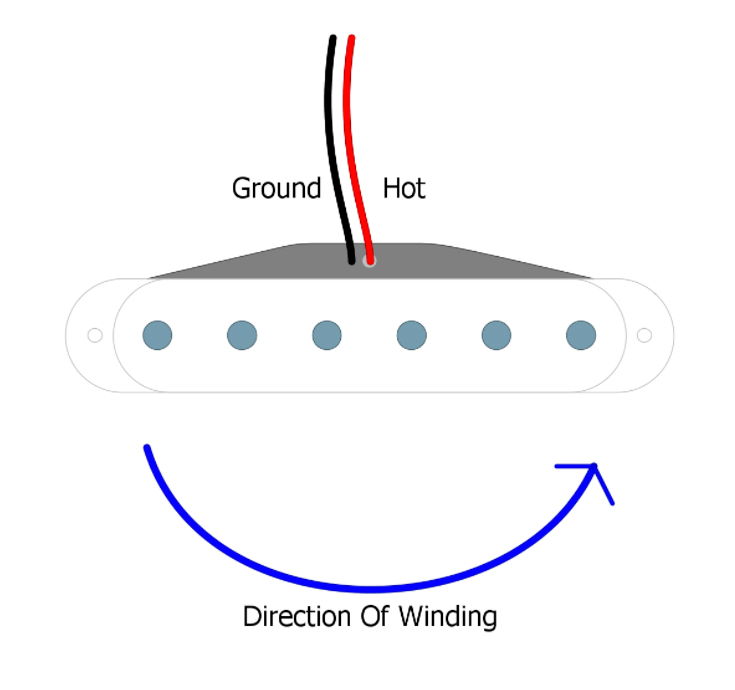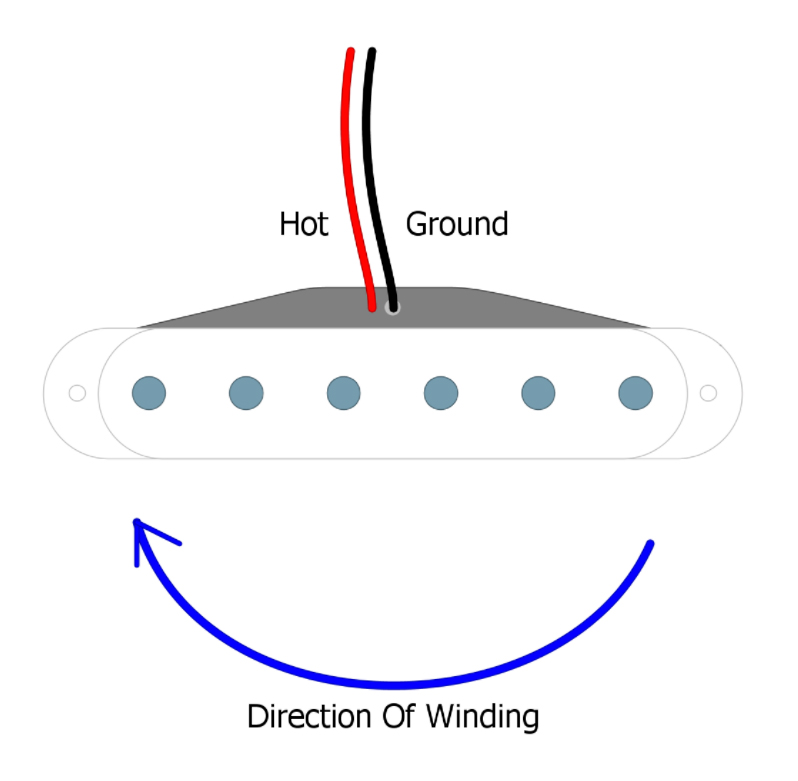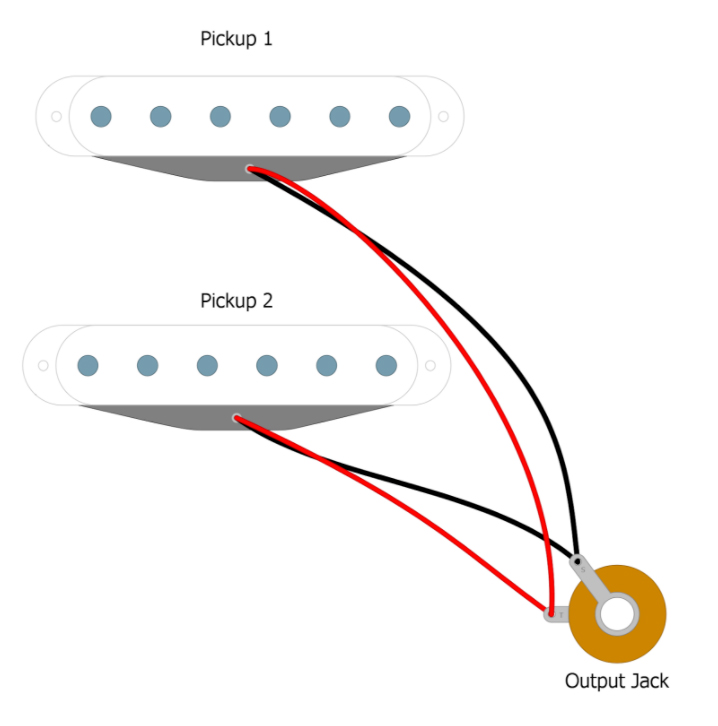
By Ed Malaker
Posted 06/22/2018
In this article, we’ll start with the basics of guitar pickup wiring by examining what it means when guitar pickups are wired in-phase, out-of-phase, series, or parallel. The first thing we’ll need to do is understand a little about how pickups are made and how they work.
Guitar Wiring 101: The Pickup
Pickups are one of the simplest electronic devices there are. They are simple enough to create yourself, with little more than a spool of wire (usually a coated wire), a magnet (small pile magnets, or steel posts and a bar magnet), and some fiberboard or plastic.
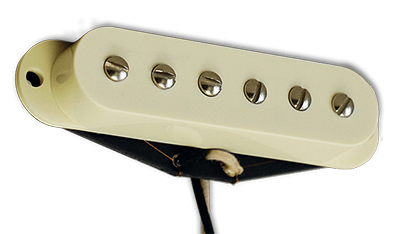 You might also like this HumbuckerSoup article: Lindy Fralin Pickup Phase — What’s the Deal?
You might also like this HumbuckerSoup article: Lindy Fralin Pickup Phase — What’s the Deal?
Simply put, you create a bobbin out of the fiberboard and the magnets, then you wind the wire around the bobbin thousands of times. The more you wind, the hotter the pickup will be. The beginning of the wire is the Ground lead; the end of the wire is the Hot lead.
The copper wire and the magnet create a small electromagnetic field that reacts to your guitar strings and creates an electrical signal with a constantly varying voltage in the Hot and Ground leads. Your amplifier interprets these changing voltages as your guitar signal.
I’ve explained this because there are two key things that pertain to this article on guitar wiring: the magnet and the coil.
The Magnet
The magnet determines the polarity of the pickup. It will be facing either North Up or South Up. If you are not sure what your pickup polarity is, there are two ways to find out. The first way is to use a regular, old-school compass and hold it to the pickup in question. If the North of the compass points AWAY from the pickup then the pickup has a North Up Polarity, if the North of the compass points TOWARD the pickup then it has a South Up Polarity. The second way is to use another magnet. If the North side of the magnet repels away from the pickup, then the pickup has a North Up Polarity. If the North side of the magnet sticks to the pickup then it has a South Up Polarity.
For two single-coil pickups to have noise-canceling properties (in the two and four switch positions) one pickup must have a North Up Polarity and one pickup must have a South Up Polarity. Humbucker pickups have two coils and they are designed so that one coil has North Up polarity and one coil has South Up polarity.
The Coil
As I’ve said earlier, in my discussion of guitar pickup wiring, the coil is wound around the magnets, and it can be wound in either a clockwise or a counterclockwise (often referred to as Reverse Wound) direction. There are a few ways to determine which way your coil is wound.
If the pickup in question is a single-coil, then many times you can check by holding the pickup with the leads coming out from the top. Remember that the coil is wound from Ground to Hot. If the Ground wire is on the left, then the coil will be wound Counterclockwise to get to the right side of the pickup, resulting in a Reverse Wound pickup (Fig 1). If the Ground Wire is on the right, then the coil will be wound Clockwise to get to the left side of the pickup, resulting in a regular Standard Wound pickup (Fig 2).
Fig 1
Fig 2
The best way is to use a test meter. Set it to a low DC voltage range and connect the Black lead to the Ground of the single coil pickup and the Red lead to the Hot. Lightly tap a screwdriver on the magnet while watching the meter. Now, if you get a positive reading, it is a Standard Wound Pickup; if the reading is negative, it is Reverse Wound.
If you have a Standard Wound Pickup but you need a Reverse Wound, you can simply reverse the wires. That is, wire the Ground where you were going to wire the Hot, and wire the Hot where you were going to wire the Ground. This will work.
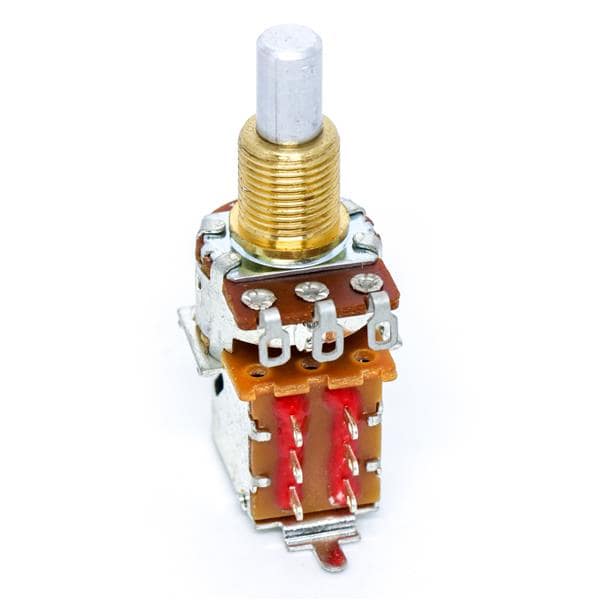 You might also like this HumbuckerSoup article: Understanding Push-Pull Potentiometers (SPST)
You might also like this HumbuckerSoup article: Understanding Push-Pull Potentiometers (SPST)
Phase
Phase only affects pickups when they are selected at the same time, such as the two and four positions of a five-way switch AND are in close proximity to each other such, as the Neck and Middle pickup.
For two single-coil pickups to be In Phase with each other, they must BOTH be either the same (North Up, Standard Wound), or opposites (the bridge pickup is North Up, Standard Wound and the middle pickup is South Up, Reverse Wound). Only the opposites option results in noise cancellation, so that is what we consider “Correct.” Any other combination, such as two pickups with two North Up but different coil directions, will cause the pickups to be Out Of Phase with each other. Out Of Phase pickups sound weak, thin, and hollow, and are not usually what we want.
Series Wiring
Series wiring refers to the way the coils are wired to the Output Jack. With this guitar pickup wiring method, we wire one coil into another coil that will then go to the Output Jack. This wiring doubles the voltage output, resulting in a stronger and warmer tone. Most humbucker pickups are wired using Series wiring (Fig 3).
Fig 3
Parallel Wiring
Parallel wiring refers to the way the coils are wired to the Output Jack. With Parallel wiring, both pickups are wired directly to the Output Jack in the same way. This approach to guitar pickup wiring results in a BLEND of the two coils with no significant volume boost. Most Five-Way Switches use Parallel wiring in the two and four positions to combine pickups (Fig 4).
Fig 4
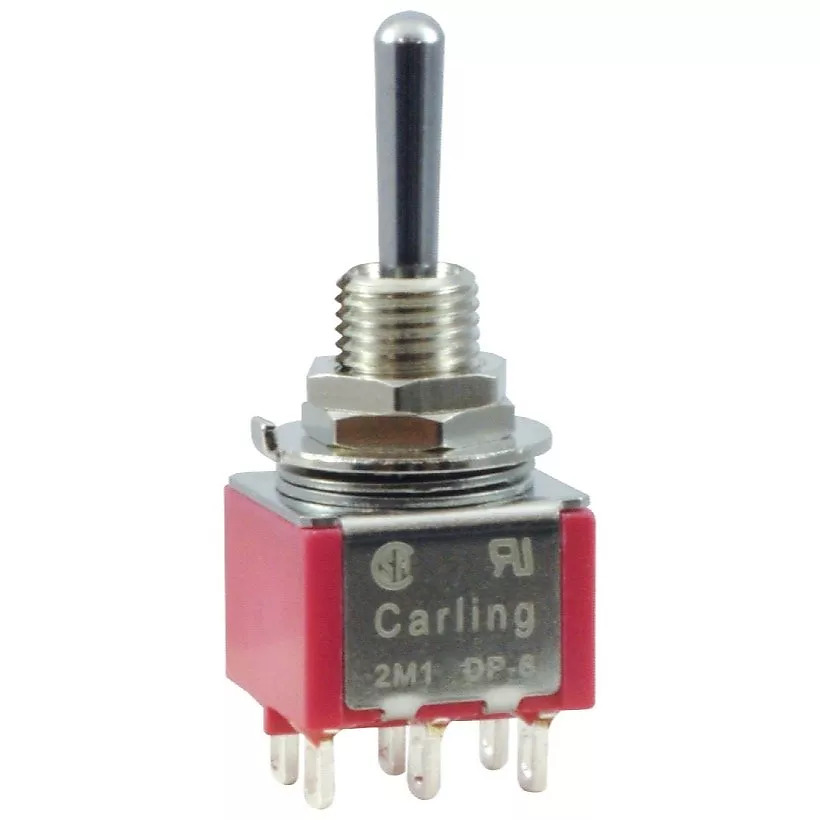 You might also like this HumbuckerSoup article: Mini Toggle Switch FAQ – Coil-Split a Humbucker Pickup
You might also like this HumbuckerSoup article: Mini Toggle Switch FAQ – Coil-Split a Humbucker Pickup
If you’ve found this article helpful, please feel free to share this with your friends on Facebook and Twitter. For more articles on guitar electronics, visit humbuckersoup.com.

